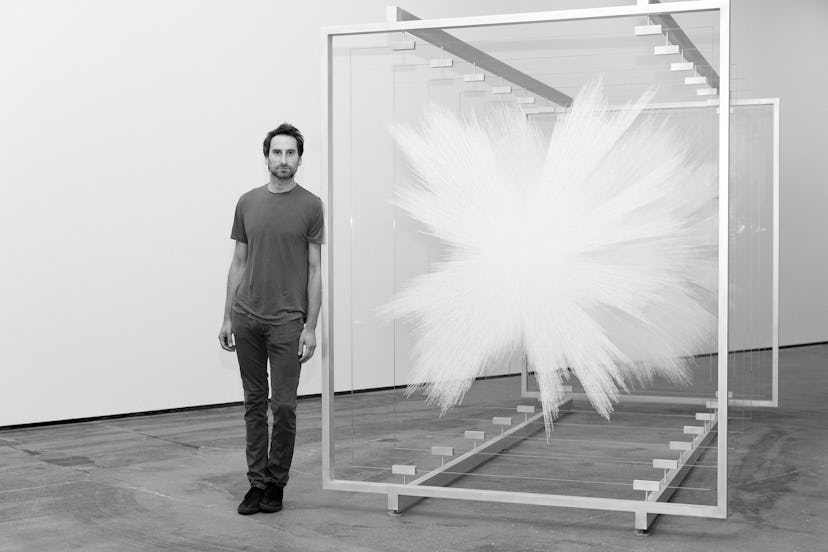Idris Khan’s Words and Pictures

Idris Khan’s practice is founded in his passion for transparency—whether that means shining light on shadowy politics with prose or demystifying the creation of a painting with photography. For his first solo show at Sean Kelly gallery, opening on September 11th, the British artist and wordsmith will debut his first sculpture, “Overture”, a glass and metal work that incorporates his whimsical writings. Before the opening, Khan offered an exclusive preview. Take a tour here.
1
Idris Khan at Sean Kelly gallery, 2015.
2
“For my writings, I try to draw from people’s experiences. I cannot understand what it is like to be in an active conflict zone, but through reading first-hand narratives and the news, I can begin to piece together the fragments in a way that becomes something new.”
3
“I like the idea that people can get lost in my works. There are so many instances in the media about individuals who are displaced by wars, genocides, dictators. I wanted to find a way to tap into those emotions through aesthetics.”
4
“I take a picture of each stroke I make on the canvas. What you are looking at is almost 1500 photographs of the same painting that I’ve layered in order to create a new composition.”
5
“You have no idea how hard it is to get a perfect sheet of glass. I wanted the viewer to be aware, perhaps for the first time, of what glass really looks like.”
6
“My titles almost always come from my writings. They are sort of visual poems—not that I fancy myself a poet.”
7
“The stamps became a kind of ritualistic part of my practice. It has a kind of rhythm. It can feel almost like prayer.”
8
“What’s beautiful about gesso is that it really sucks in the pigment so you can keep going and going.”
9
“I never give away the entire passage. The viewer is asked to fill it in, which makes it a more abstract experience.”